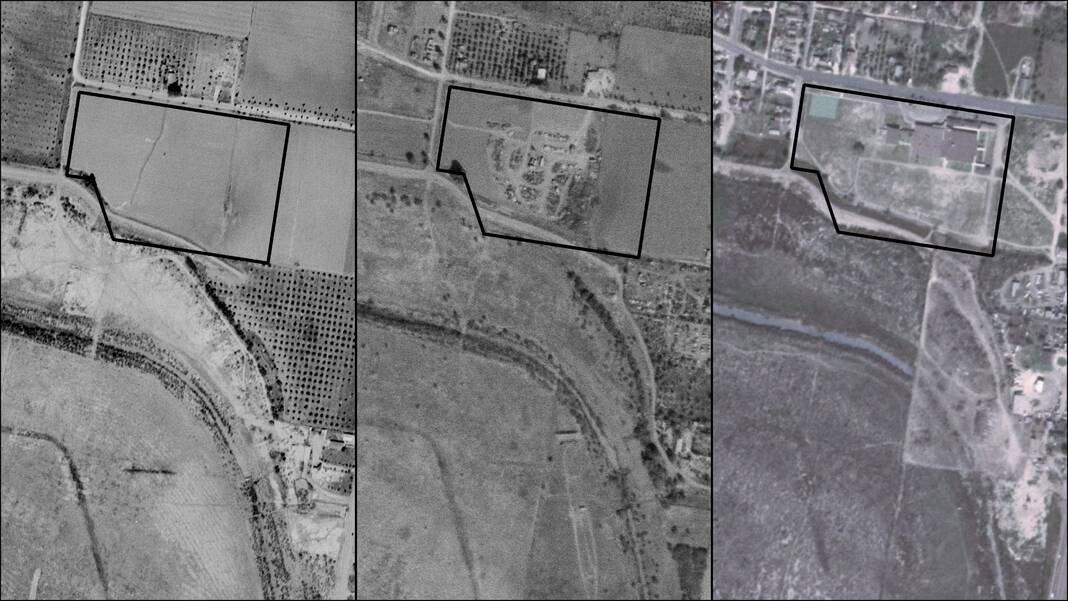|
Only have a minute? Listen instead |
Conducting an archaeological dig is like putting together a story from the past, and UTRGV Assistant Anthropology professor Edward Gonzalez-Tennant, who is spearheading a dig at Bonham Elementary, said anything dug up can give a glimpse of how people lived thousands of years ago.
Before McAllen ISD can sell the Bonham Elementary property to the Boys & Girls Club of McAllen, the district by federal law must conduct an archaeological dig given that the property might intersect a prehistoric/Indigenous burial ground.
That burial ground is called the Ayala site in South McAllen, which was first discovered in 1948 during construction of a sewer trench.
Gonzalez-Tennant said it is part of the National Historic Preservation ACT, or section 106, where the need for archaeological compliance is needed.
“So if there are federal funds involved, then these federal laws require that some sort of work be done to basically clear the area of development,” he said.
The school district reached out to the Texas Historical Commission (THC), a state agency that oversees archaeological compliance work, which is when McAllen ISD reached out to UTRGV.
Gonzalez-Tennant was contacted and began going through literature and original archaeological maps that were published in the 1950s to find the exact burial ground site.
“It’s interesting because it shows people being buried in a group collectively,” Gonzalez-Tennant said. “They have an idea of this is our cemetery, you know, and the artifacts connected to people further to the east towards Brownsville, towards the coast.”
He said the site had several burials dating back within the last thousand years, with many of the burials having grave goods such as jewelry, seashells, coyote teeth, pendants and various other personal adornment items.
Gonzalez-Tennant said the Indigenous people burying their dead with objects signify something about who they were in life or objects that they would have which is similar to the way people bury their loved ones today.

The buried objects also indicate that groups either traveled to the coast and back, traded with other groups or even engaged in long distance trade.
He said the area is known as the Brownsville-Barrill complex, a name archaeologists gave to the groups that occupied the Rio Grande Delta with the Rio Grande being a highway and way for traveling, communicating and trading.
When the burial grounds were initially found, Gonzalez-Tennant said there were pictures in the press at the time of people holding human remains which nowadays would be considered disrespectful.
“When I talk to students about these topics, most of us know where our grandparents are buried,” he said. “We would prefer that some random person from outside our community not show up and just pick them up. So, you know, we can extend that further into the past and for many archaeologists, myself included, we extend it basically all the way in the past.”
He added when archaeologists deal with burial sites, they would have to enter into consultation with federally recognized tribes that would trigger an additional set of legal, ethical and moral obligations.
With his research focus on the application of digital technologies in archaeology, he said he used computer mapping geographic information systems and geo-referenced aerial photos of the site to precisely update the boundaries of the site.
Gonzalez-Tennant, who is also the director of the Laboratory of Valley Archaeology, said the boundaries of the Ayala burial site are conservatively outside of the school property.
He said the archaeological dig site on the school property will be on one acre of land that has not been disturbed by roads or buildings.
Gonzalez-Tennant said the dig is unlikely to find much but there is always the chance that they find something major.
“My instinct as such is that we probably will find relatively little but … the reason we’re doing testing at all is, you still have to make sure,” he said.
He said archaeological consulting or cultural resources management work involves three phases with the dig at Bonham Elementary focusing on just one phase.
“Phase one is what we could call the limited archaeological testing,” he said. “Basically we’re going to dig a sample of the area one way or another and depending where you’re at would determine what kind of sampling strategy you adopt.”
Depending on various factors, one important one is the type of soil in the area. One method is shovel testing, where you dig by hand the soft soil. The other method for a place like South McAllen where there is a thick layer of river deposits from thousands of years ago, you have to use a mechanical trenching approach with a backhoe.
Gonzalez-Tennant said he will have to subcontract a backhoe operator for the dig and preferably someone that has experience with archaeologists.
The dig will be about 3 feet wide, 6 feet long and 5 feet deep in the middle of the acre.
“If people stop by and don’t know what we’re doing, it’s going to look like we’re digging a grave,” he said. “Which is a little unfortunate given the stories about the area.”
Monitoring the whole operation, Gonzalez-Tennant and a team of archaeology students will remove a sample of dirt from every third backhoe bucket and strain the dirt by shaking it through a screen.
“We see if there are any artifacts, if there are we collect them,” he said. “We note the general depth they come from. We’ll do that process, once that’s dug, We’ll sort of map the trench and look at the soil profile. Look at the different layers or strata of soil.”
Gonzalez-Tennant said the fieldwork will probably only take two days and then they will bring all any material collected to analyze.
He added the dig will be a great opportunity for the students participating since they don’t usually get an opportunity to do fieldwork in the Valley.
Once the lab analysis is finished, they will write a formal report and submit it to the THC and McAllen ISD.
Depending on what is found, the THC will address the reports with comments and approve the clearance of the sale of property.

